To start off, I want to say that I know that every pet is different. Working in the veterinary business as well as the rescue field, I completely and fully understand that what works for one pet, may not necessarily work for another. The point of this feature is not to tell you what you should or should not do, but to let you know that you’re not alone and that managing this debilitating condition IS possible.
I’ve seen animals surrendered, dumped, and mistreated simply because of the extent of their anxiety – and as terrible as that is, a small part of me can understand why.
Anyone who tells you that separation anxiety – true separation anxiety – has one simple solution is either lying, a fool, or mistaken. It can be many things, easy is definitely not one of them.
Watching your pet struggle and shake and become fearful over something as simple as you leaving is hard enough. But watching your pet PHYSICALLY hurt themselves or put themselves in danger because of their anxiety is just unbearable.
But it can be helped. Through consistency, through training, and through love, separation anxiety can be controlled.
And this is where my story begins.
I was a teenager when Bentley first came to me. My sister had been working as a veterinary technician at a local vet, where rescues would bring in their animals to be spayed and neutered. She had been assisting in surgeries that day when her eyes found a small, baby beagle. He was just about 5 weeks old, 4 pounds and TO DIE for. Small face, big eyes, bigger ears.
When the rescue caring for him mentioned that they were having trouble placing him in a home, she couldn’t help herself. She brought him home and elected to be his foster until a forever home was found.

I still remember her calling me on her way home, telling me to ‘prepare myself’. Confused and curious, I waited until I heard the familiar rumble of her car come into the driveway. She stepped out, shut her door, and looked up at me through the kitchen window.
That’s when I saw him. This tiny, pot-bellied fluff of fur in her arms. I couldn’t contain my excitement. The second I had him in my arms, I had no intention of letting him go. Bentley was mine, all mine.
From that day forward, we were inseparable. Though, when it came time to experience puppyhood, man was I not prepared. I swear this small, 6 inch dog peed and pooped three times his weight each day.
One of the things that some don’t realize or take into account when adopting a puppy is that they can’t be left alone. For the working parents, this means that you either have to take your pet to work everyday until they are trusted to remain at home unsupervised, or you have to crate them.
As I didn’t have a working environment that allowed dogs at the time, I began crating him. And boy, did he not like it.
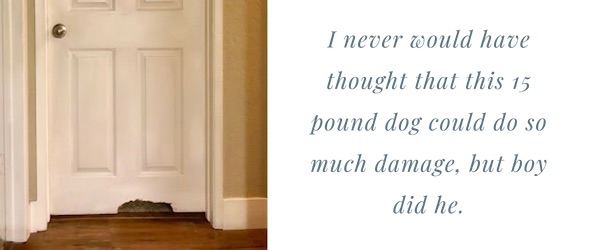
I read books, watched videos, and talked with trainers on how to appropriately crate train my puppy. However, day after day, night after night, Bentley just would not take to it. He’d shake, howl, scream, and even scratch at the crate. Our neighbors complained from the constant shrieking coming from our house and while I tried calming spray and sleepy-time music, he continued to struggle. When he started to develop physical trauma from the crate, I vetoed it.
However, little did I know that the problem wasn’t the crate at all. It was being separated from me. Regardless of the crate, Bentley slowly became more and more destructive the longer he was left alone.
I never would have thought that this 15 pound dog could do so much damage, but boy did he. You name it, he chewed it. From baseboards to walls to crates, this dog chewed it all. At one point, he even manage to chew through a wooden door. Yep, an actual door.
I’ve been horrified, angry, confused, frustrated, and just plain sick to my stomach throughout all the trials of Bentley’s anxiety. The strangest part was that, when with me, he was the sweetest and most mellow dog you could have ever met. He loved to play, sure. But, what he loved most was to sleep and to sun-bathe.
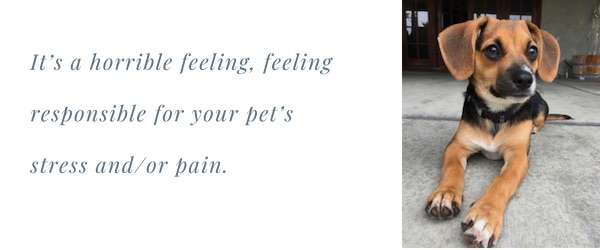
We went through trials of Fluoxetine, Prozac, Acepromazine, Clomicalm, and Trazadone without much improvement. We tried calming collars, aromatherapy sessions, and soothing musical albums, but still, no improvement.
And at some point, when the medications and the therapy fell short, I began to question the part that I played in his condition. Did I baby him too much? Did I hold him too much when he was young? Did I make him this way?
It’s a horrible feeling, feeling responsible for your pet’s stress and/or pain. Everyday, I watched Bentley suffer and become frightened without being able to comfort him. And the worse he got, the more self-doubt and guilt I felt in my capabilities of being his guardian.
But I continued to try.
He chewed through and escaped from his crate on so many occasions that Amazon began to notify me on a monthly basis to ‘stock up’ on my basic metal crates – as if I had a subscription or an addiction to purchasing them.
What’s worse though is that his destructive behavior never stopped once out of the crate. A dangerous pattern began in which I’d either come home to a bloody dog, whose mouth would be torn to shreds from the wood and nails of my walls, or I’d come home to a hole in my wall and no dog at all.
On numerous occasions, I’d get calls from strange numbers while at work, telling me that my dog was loose on the road. Frantically, I’d drop everything and run to him, praying that he’d still be alive by the time I got there.
However, the more times I’d get him back in my arms, the less relieved I’d feel. When the frustration wore off and my adrenaline died down, I found myself becoming desensitized to Bentley’s anxiety. I felt sluggish and tired and on most days, I didn’t eat.
The yelling, the scolding, the shakiness I felt with each act of destruction Bentley would perform burned out like a light. Yes, it was Bentley’s condition, but I felt the effects of it harshly.
But once more, I continued to try.
We invested in a heavy duty, escape-proof crate as a last resort to keep Bentley safe, even though we feared the damaged he could do to himself with such a hefty, unbreakable cage. We continued with the soothing music, the supplements, the training.

And just when I least expected it, something amazing happened.
A homeless dog, found in an abandoned building, was brought in my home on a whim and though we feared how Bentley would act, we were shocked to find that he took to him almost immediately.
Suddenly the shaking stopped, the escaping stopped. Bentley turned into this creature that I’d never known before- this open, playful, and spunky dog.
The months and months of working with Ben, the hardships, the constant repainting and reconstructing my walls, all felt like trials worth enduring.

Seeing how happy Bentley was, understanding the importance this dog’s companionship was to him and his health, was the greatest feeling in the entire world. If I had given up on him when it got hard, I would never have had the pleasure of feeling the gratefulness that I feel now.
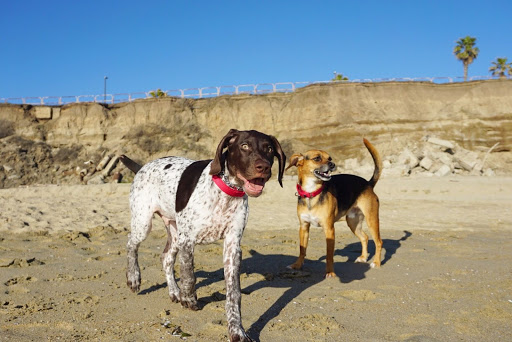
To this day, I still invest in behavioral training and still look for new ways to keep Bentley feeling safe and protected in my home. There are bad days, sure. Days when I feel him reverting back to his old ways of destruction. But, that’s to be expected. Everyone has bad days.
However, the more time that passes and the longer we stay consistent with his training and socialization, the better I’ve seen him become – and I feel that I have our rescue dog Blue to thank for that.
Now, I know this isn’t the case with some pets. As I said before, every pet is different. The point of my story is not to tell you what to try and what not to try when dealing with your pet’s separation anxiety. (Although, I will say that confidence building and physical stimulation are KEY.)
Rather, the moral I’ve come away with is to keep going. Everyday, hundreds of animals are given away, dumped, and ripped out of their homes because of their separation anxiety, because their families “just can’t take it anymore.”
To that, I want to declare that the past year with Bentley has been the hardest year of my life. However, when I adopted him and took him into my home, I made a vow to stand by him. I made a commitment to care for him in his time of need, in sickness and in health. That is the unwritten, unspoken agreement we make to our pets when we take them in.
They are living, breathing beings with emotions and feelings. They are not pieces of property we get to toss out when the going gets tough.
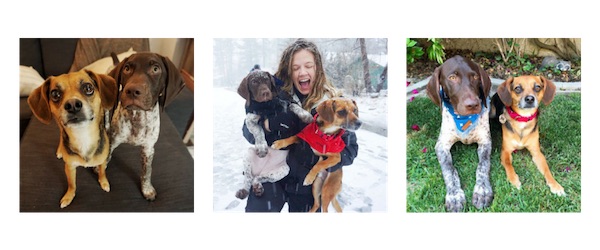
To this day, Bentley still shakes every now and then when he sees me put my shoes on and that’s ok. Because I will never be that person to confirm his worst fears. No matter what, I will continue to come home to him everyday and remind him time and time again what it means to be a part of my family.

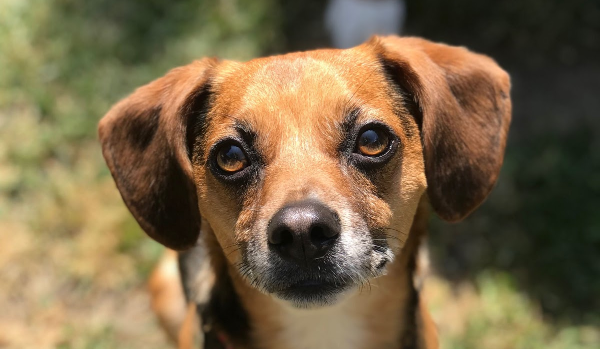
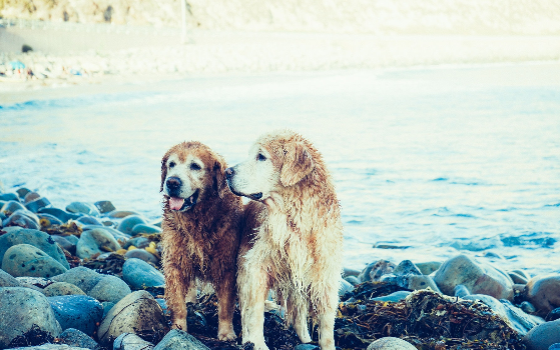
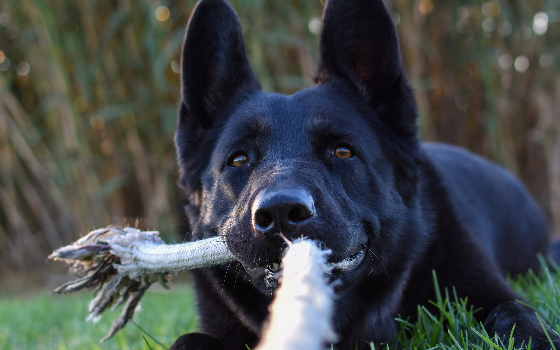
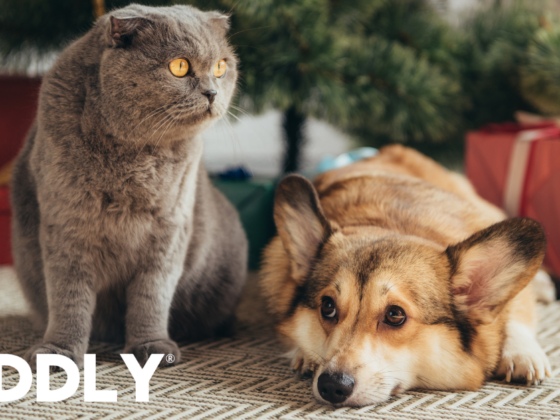
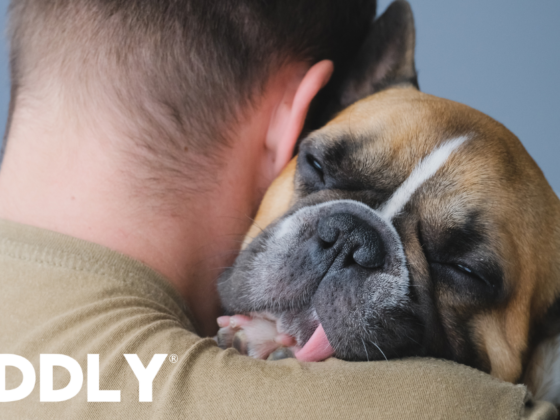
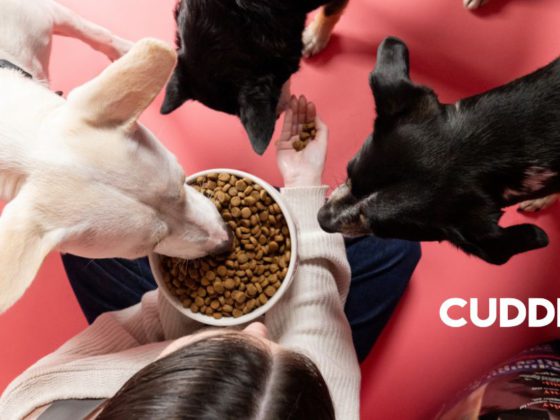
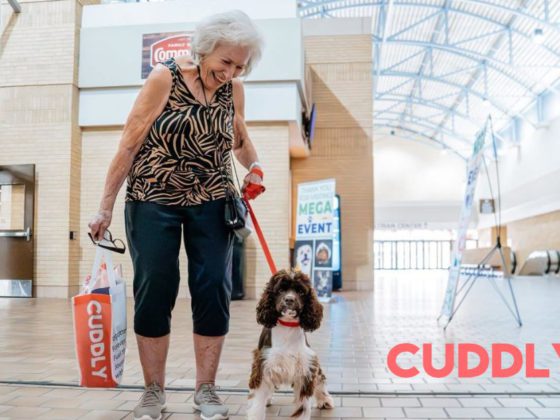


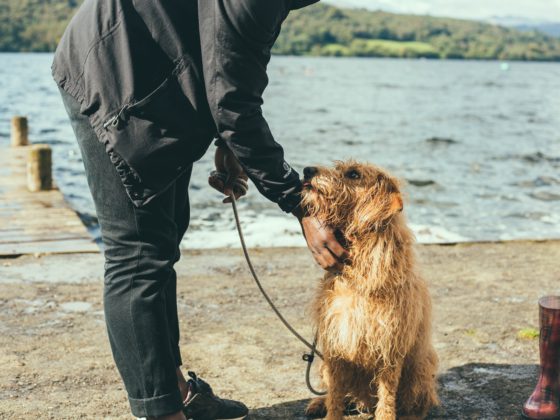



2 comments
Thank God for all of you. I found you recently, donated immediately, and feel (in some way) that I’m helping, too. Thank you for who you are, what you do, and what you mean to God’s creatures.
Wonderful, wonderful story! If Sydney is writing novels and taking loving care of animals, she is in a business that she was born for! I’m a huge animal lover, too, and it is heartbreaking sometimes to know that I can’t “take care of all of them.” I’ve taken in homeless cats and dogs for the past 45 years, and, although I’m 76, I still do. I just can’t look the other way when they need me. But I have found homes (besides my own! )for many of them, too. I just can’t help myself, and I’m beginning to think that, after all these years, my sons are finally beginning to realize that. I would be miserable without at least one. That’s the way it is and the way it will always be!
Comments are closed.